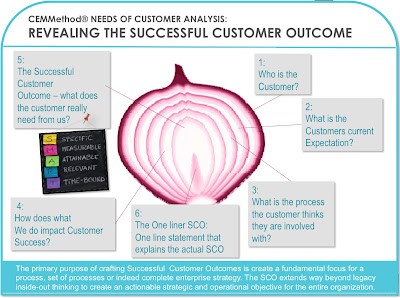I explore these more thoroughly in the book Outside In however for now let’s take them in bite sized chunks.
• Understand and applying Process diagnostics
• Identify and aligning to Successful Customer Outcomes
• Reframe where the process starts and ends
• Rethink the business you are in
Let’s start with…
1. Understand and applying Process diagnostics:
(These will be familiar to CPP people however a refresher is always nice)
Earlier we have mentioned Moments of Truth, those all important interactions with customers. Let’s take that discussion further and include other closely related techniques for uncovering the real nature of process – breakpoints and business rules.
Firstly Moments of Truth (MOT) were first identified by Swedish management guru Richard Normann (1946-2003) in his doctoral thesis “Management and Statesmanship” (1975).
In 1989 Jan Carlson, the CEO of Scandinavian Airlines (SAS) immortalized the phrase with his book ‘Moments of Truth’. He clearly linked all customer interaction as the Causes of Work for the airline and set about eradicating non value added MOT’s and then improving those he couldn’t remove.
a) Moments of Truth are a Process Diagnostic
b) They occur ANYWHERE a customer “touches” a process
c) They can be people-to-people, people-to-system, systems-to-people, system-to-system, and people-to-product
d) ANY interaction with a customer is a Moment of Truth
e) Moments of Truth are both process Points of Failure and Causes of Work
Carlson transformed the fortunes of SAS with this straightforward insight – all work in our organisations is ultimately caused by the Moment of Truth. Fix them and you fix everything else.
All Moments of Truth should be eradicated and those remaining improved. In doing so the customer experience is improved, costs are reduced and productivity maximised.
Next let’s review Breakpoints. Breakpoints (BP’s) are the direct consequence of MOT’s and are all the internal interactions that take place as we manage the processes caused by the customer interactions.
a) Any place that a hand-off occurs in the process is a Break Point
b) Break Points can be person to person, person to system, system to person or system to system
c) Break Points are both process Points of Failure and Causes of Work
By identifying BP’s we can set about uncovering actions that would in turn remove them, or if not improve them. BP’s are especially evident were internal customer supplier relationships have been established say between Information Systems departments and Operations. Empirical research suggests that for every Moment of Truth there are an average of 3 to 4 Breakpoints. In other words a process with ten MOT’s will typically yield 30-40 Breakpoints.
All Breakpoints should be eradicated and if not at the very least improved. In doing so we get more done with less, red tape is reduced, control improves and the cost of work comes down.
The third in our triad of useful Outside-In techniques is Business Rules.
Business Rules are points within a process where decisions are made.
a) Some Business Rules are obvious while others must be “found”
b) Business Rules can be operational, strategic or regulatory and they can be system-based or manual
c) Business Rules control the “behavior” of the process and shape the “experience” of those who touch it
d) Business Rules are highly prone to obsolescence
e) We must find and make explicit the Business Rules in the process
Business Rules (BR’s) are especially pernicious in that they are created for specific reasons however over time their origin is forgotten but their effect remains. For instance one Life insurance company had a delay of eight days before issuing a policy once all the initial underwriting work was complete. This has a serious impact on competitiveness as newcomers were able to issue policies in days rather than weeks. After some investigation it was discovered that the ‘8 day storage’ rule was related to the length of time it takes ink to dry on parchment paper. This rule hadn’t surfaced until the customer expectations changed. There are many examples of previously useful rules evading 21st century logic and blocking the achievement of successful customer outcomes. All Business Rules should be made explicit and challenged in todays context.
LinkedIn: http://bit.ly/joinbpgroup Twitter: http://twitter.com/stowers
Next time we’ll take a look at the second way to radically redefine process:
- Identify and aligning to Successful Customer Outcomes

















